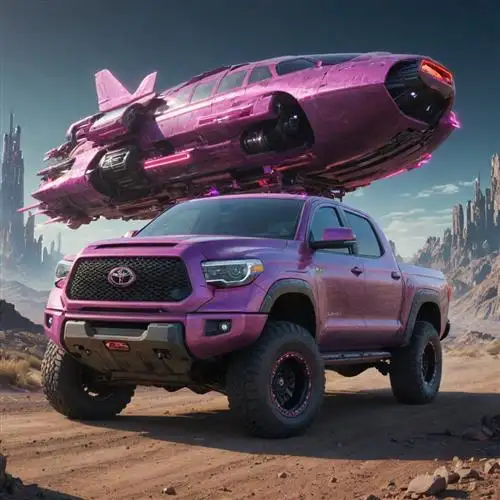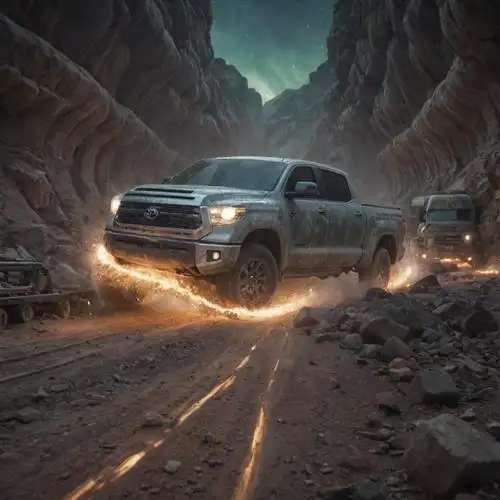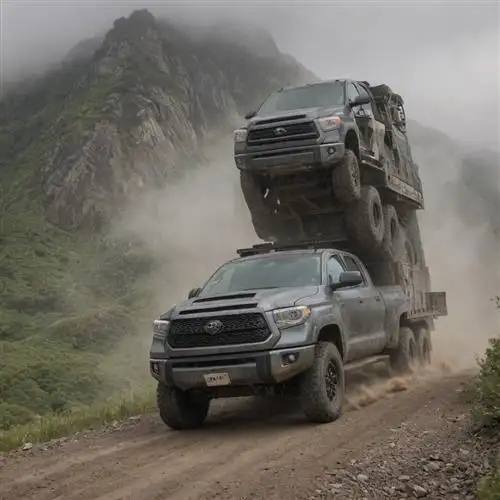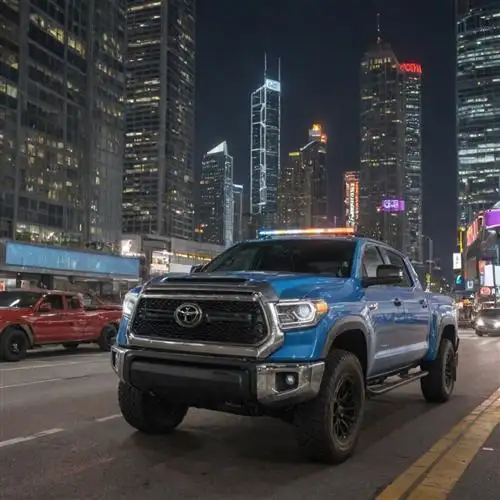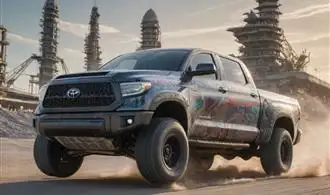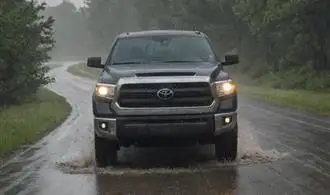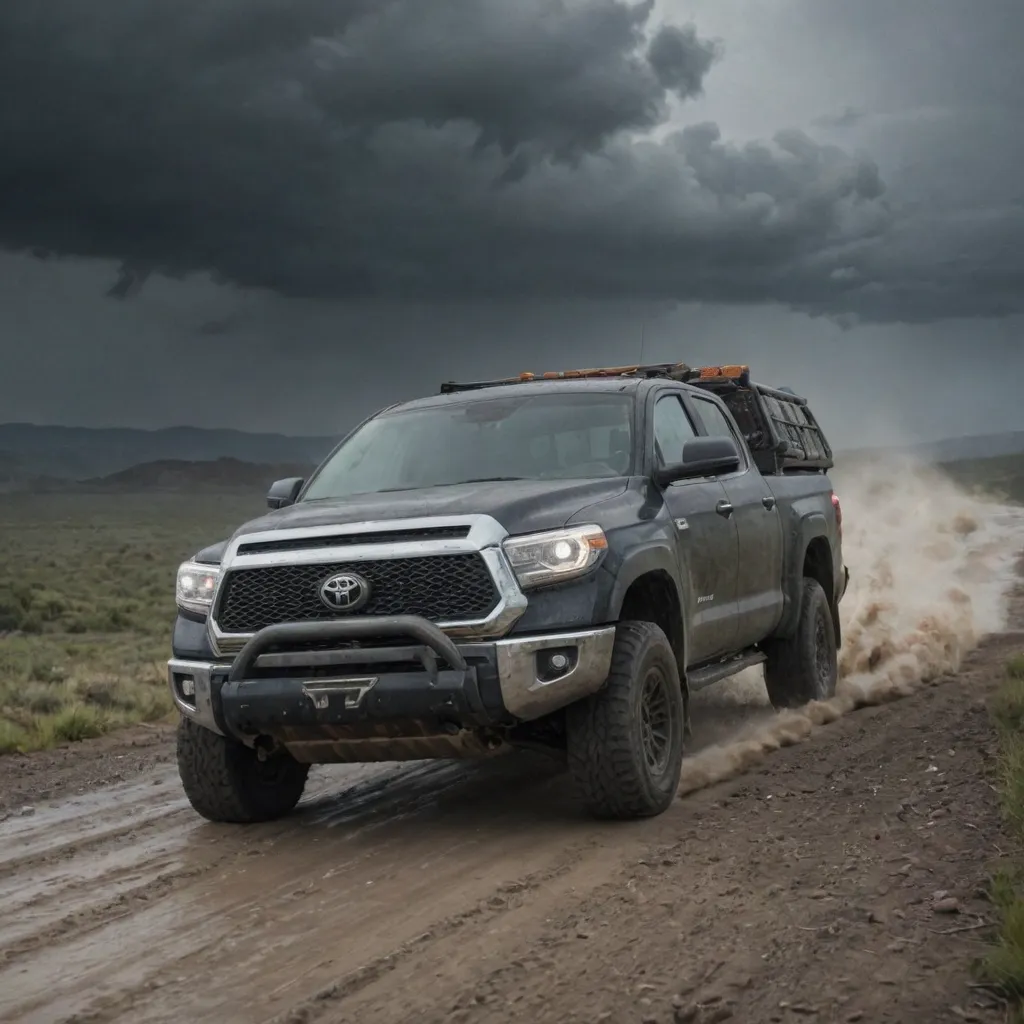
Towing Capacity Breakdown
The Toyota Tundra is renowned for its impressive towing capabilities, making it a popular choice for those who need to haul heavy loads. Understanding the towing capacity of your Tundra is crucial for ensuring safe and efficient towing. Let's dive into the details:
The Tundra's towing capacity is determined by several factors, including the specific model, engine, drivetrain, and available towing package. Base models of the Tundra can tow up to 8,300 pounds, while models equipped with the available towing package can handle up to 10,200 pounds. This significant difference highlights the importance of selecting the right configuration to meet your towing needs.
When it comes to the engine, the Tundra offers a choice between a powerful 5.7-liter V8 engine and a more efficient 3.5-liter twin-turbo V6 engine. The V8 engine, producing 381 horsepower and 401 lb-ft of torque, is the powerhouse option, capable of towing heavier loads with ease. The V6 engine, while slightly less powerful, still delivers impressive towing capability and may be the better choice for those who prioritize fuel efficiency.
The Tundra's drivetrain also plays a role in its towing capacity. Rear-wheel-drive models generally have a slightly higher towing capacity than four-wheel-drive models, as the additional weight and complexity of the four-wheel-drive system can slightly reduce the maximum towing capacity.
Another crucial factor to consider is the Tundra's payload capacity, which is the maximum weight the vehicle can safely carry, including passengers, cargo, and the weight of the trailer or camper. Exceeding the payload capacity can negatively impact the vehicle's handling, stability, and braking performance, potentially leading to dangerous situations. It's essential to carefully calculate the total weight of your load and ensure it falls within the Tundra's payload limits.
To maximize the Tundra's towing capabilities, it's recommended to equip your vehicle with the appropriate towing package. This package typically includes features such as a heavy-duty hitch, larger brakes, and upgraded cooling systems, all of which contribute to the Tundra's ability to handle heavier loads safely and efficiently.
Maximizing Towing Performance
The Toyota Tundra is a powerhouse among full-size pickup trucks, boasting impressive towing capabilities that cater to a wide range of needs. Whether you're hauling a boat, a trailer, or heavy-duty equipment, unlocking the full towing potential of your Tundra is crucial. Here are some valuable tips to help you maximize the towing performance of your trusted Toyota truck.
Firstly, ensure your Tundra is equipped with the right towing package. Toyota offers several towing-focused packages, each with its own set of features and specifications. Carefully assess your towing requirements and select the package that best suits your needs. This may include features like a heavy-duty hitch, enhanced cooling systems, and trailer brake controllers.
Next, pay close attention to your Tundra's payload and towing capacities. These ratings are essential in determining the maximum weight you can safely tow without compromising the vehicle's performance or safety. Overloading can lead to reduced handling, increased wear and tear, and even potential accidents. Consult your owner's manual or connect with a Toyota dealer to understand the precise towing and payload limits for your specific Tundra model.
Proper weight distribution is another key factor in maximizing towing performance. Ensure the weight of your trailer or cargo is balanced correctly, with the majority of the weight positioned over the Tundra's rear axle. This will help maintain optimal stability and control, especially when navigating hills, curves, or inclement weather conditions.
Consider upgrading your Tundra's suspension components if you frequently tow heavy loads. Aftermarket suspension kits, such as heavy-duty springs or shock absorbers, can provide enhanced stability and improved ride quality, ensuring a smooth and controlled towing experience.
Finally, invest in quality towing equipment, such as a sturdy hitch, safety chains, and a properly maintained trailer. Regularly inspect these components and make any necessary replacements to ensure they can reliably handle the demands of your towing activities.
Trailer Stability and Control
Towing a trailer with your Toyota Tundra requires meticulous attention to trailer stability and control. The weight and dimensions of the trailer can significantly impact the handling and maneuverability of your vehicle, making it crucial to understand the factors that contribute to trailer stability.
One of the primary considerations is the trailer's weight distribution. Proper weight balance is essential for maintaining control, particularly during turns, lane changes, and braking. Ensure the trailer's heaviest items are positioned over the axle(s), with lighter items towards the front and rear. This balanced weight distribution helps prevent sway, which can lead to dangerous situations on the road.
The trailer's suspension system also plays a vital role in stability. Look for a trailer with a well-designed suspension that can absorb the impact of uneven surfaces and provide a smooth ride. This will help mitigate the risk of trailer sway and improve overall handling.
Additionally, the Tundra's own towing capabilities are a key factor in trailer stability. Ensure your Tundra's towing capacity, hitch ratings, and other specifications are compatible with the trailer you plan to tow. Exceeding the Tundra's limits can compromise stability and lead to dangerous situations.
To further enhance trailer stability, consider investing in advanced towing technologies, such as electronic trailer sway control or brake controllers. These systems can automatically detect and mitigate trailer sway, providing an additional layer of safety and control.
Towing Accessories and Upgrades
Maximizing the towing capacity of your Toyota Tundra is a surefire way to unlock its true potential. While the Tundra's stock towing capabilities are already impressive, the right set of accessories and upgrades can take your towing experience to new heights. From heavy-duty hitches to specialized suspension systems, the options are endless when it comes to enhancing your Tundra's towing prowess.
Investing in a premium hitch system is a must for those who plan to tow heavy loads regularly. Look for a hitch that is rated for the maximum towing capacity of your Tundra, ensuring that you can safely and confidently handle even the most demanding towing tasks. Additionally, upgrading your Tundra's suspension with beefier springs, shocks, and stabilizers can provide the necessary support to maintain control and stability when towing. These modifications not only improve the ride quality but also contribute to a safer and more comfortable towing experience.
Another crucial component to consider is your Tundra's cooling system. Towing heavy loads can put a significant strain on the engine, leading to potential overheating issues. Upgrading to a high-performance radiator, cooling fans, and transmission cooler can help maintain optimal operating temperatures, even under the most demanding towing conditions. By ensuring your Tundra's cooling system is up to the task, you can tow with confidence, knowing that your engine is well-protected.
Regarding towing accessories, the options are truly endless. From sturdy cargo carriers and storage solutions to brake controllers and trailer monitoring systems, there are countless products designed to enhance the towing capabilities of your Tundra. By carefully selecting the right accessories, you can streamline your towing setup, improve load management, and ensure a smooth and efficient towing experience.
Towing Safety and Best Practices
Towing with your Toyota Tundra requires careful consideration and attention to safety. When it comes to towing, the Tundra's impressive capabilities are only as effective as the driver's knowledge and adherence to proper techniques. Let's dive into the essential elements of towing safety and best practices to ensure a smooth and secure experience.
First and foremost, it's crucial to understand the Tundra's towing capacity. This information is readily available in your owner's manual and can vary depending on the model, engine, and configuration of your vehicle. Exceeding the recommended towing capacity can not only compromise the safety of your rig but also put unnecessary stress on your Tundra's components, potentially leading to costly repairs down the line.
Proper weight distribution is a cornerstone of towing safety. Ensure that the weight of the trailer or cargo is evenly distributed, with the majority of the weight positioned over the Tundra's rear axle. This balanced distribution helps maintain control and stability, especially when navigating turns, hills, and inclines.
Equipping your Tundra with the right towing accessories is essential. This includes a sturdy hitch, safety chains, and trailer brakes (if applicable). Regularly inspect these components to ensure they are in good working condition, and replace any worn or damaged parts immediately.
Maintaining proper trailer tires and tire pressure is another crucial aspect of towing safety. Underinflated or worn tires can adversely affect the trailer's handling and braking, potentially leading to dangerous situations. Consult the trailer manufacturer's recommendations and monitor the tire pressure regularly.
Visibility is paramount when towing. Ensure that your Tundra's mirrors are properly adjusted to provide a clear view of the trailer, and consider investing in additional mirrors or a rearview camera system to enhance your awareness of your surroundings.
Driving with added weight and length requires a different approach. Increase your following distance, reduce your speed, and exercise caution when changing lanes or making turns. Remember that your stopping distance will be longer, so plan accordingly.
In the event of an emergency, it's essential to have a plan in place. Familiarize yourself with your Tundra's towing capabilities, including the maximum weight it can handle, and be prepared to take appropriate action if the situation requires it.

